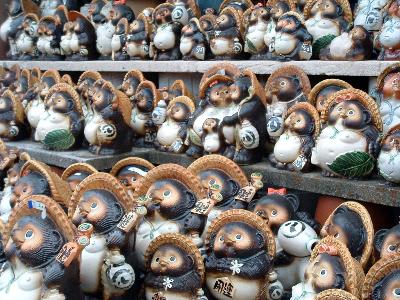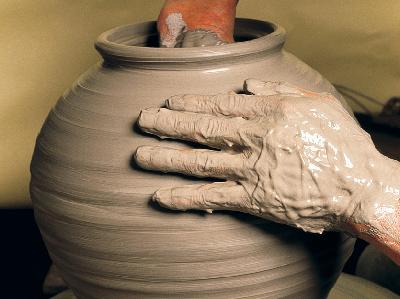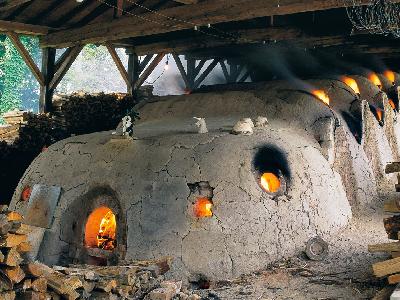|
Shigaraki yaki is a traditional pottery fired in Shigaraki town, Koka, in Shiga Prefecture. It is one of the six original ceramic sites of ancient Japan.
The origin of Shigaraki ware can be traced to the piece Shigaraki-no-miya, which was made by order of the Shomu Emperor in the Tenpei period. Later in the Kamakura, Muromachi, and Ando-momoyama periods, Shigaraki ware was used for tea ceremony implements. In the Edo period, Shigaraki ware began to be acknowledged as an everyday ware.
Nowadays, Shigaraki ware consists of various forms for different purposes. Characteristics of Shigaraki pottery are its odor of natural mud and the cracks in its surface made by fire. In other words, the mixture of mud and fire creates a sophisticated pottery with the elegant naturalism of wabisabi.
In 1976, Shigaraki ware was designated as an important cultural asset.
The origin of Shigaraki ware can be traced to the piece Shigaraki-no-miya, which was made by order of the Shomu Emperor in the Tenpei period. Later in the Kamakura, Muromachi, and Ando-momoyama periods, Shigaraki ware was used for tea ceremony implements. In the Edo period, Shigaraki ware began to be acknowledged as an everyday ware.
Nowadays, Shigaraki ware consists of various forms for different purposes. Characteristics of Shigaraki pottery are its odor of natural mud and the cracks in its surface made by fire. In other words, the mixture of mud and fire creates a sophisticated pottery with the elegant naturalism of wabisabi.
In 1976, Shigaraki ware was designated as an important cultural asset.
| [+ADDRESS] | 
|













